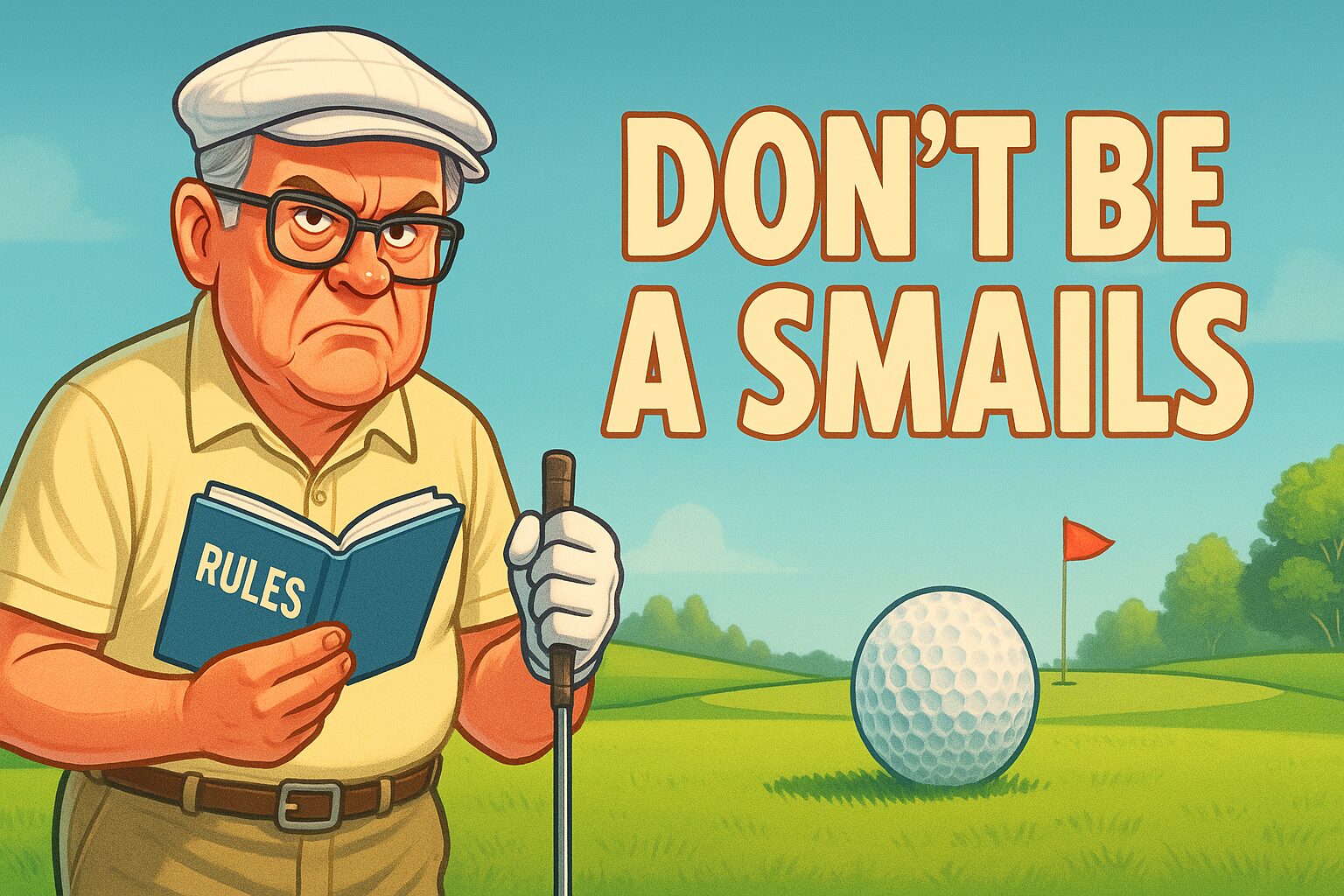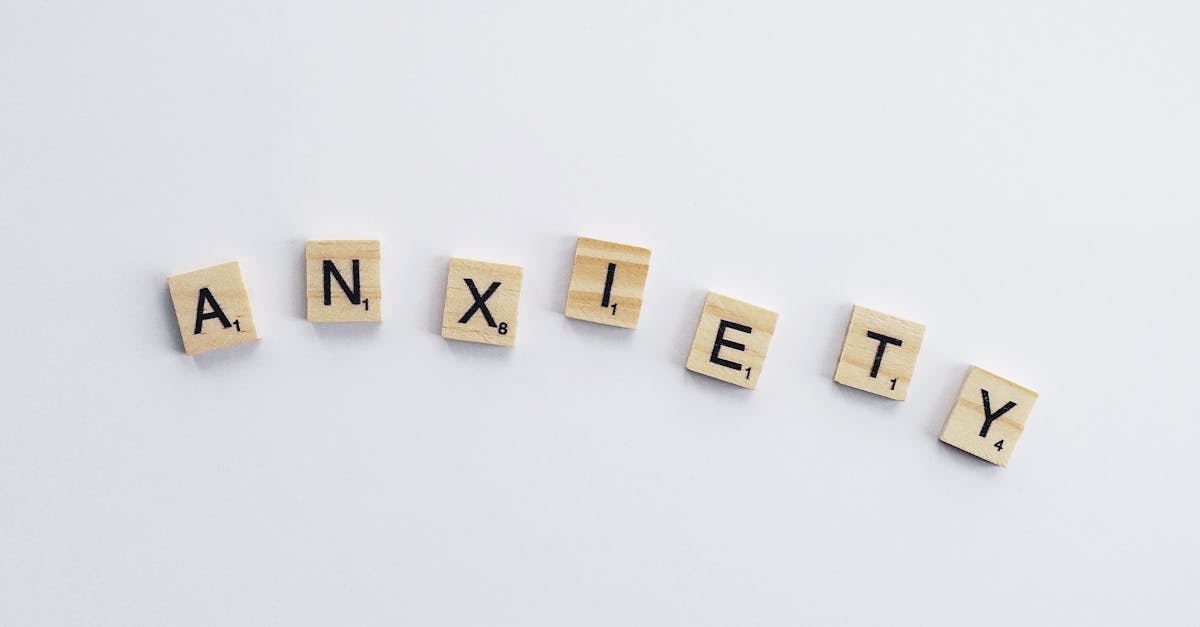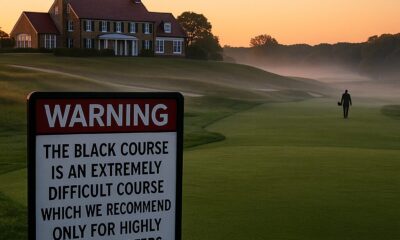Blog
Tiger Breaks His Silence Regarding his Return to Golf

In his first in-depth interview since his February car accident, an upbeat Tiger Woods shed light on his traumatic injuries, recovery and what the future might hold.
“I think something that is realistic is playing the tour one day—never full time, ever again—but pick and choose, just like Mr. [Ben] Hogan did. Pick and choose a few events a year and you play around that,” Woods said during a Zoom interview with Golf Digest’s Henni Koyack from his South Florida home. “You practice around that, and you gear yourself up for that. I think that’s how I’m going to have to play it from now on. It’s an unfortunate reality, but it’s my reality. And I understand it, and I accept it.”
Watch the complete video interview below:
“I don’t have to compete and play against the best players in the world to have a great life. After my back fusion, I had to climb Mt. Everest one more time. I had to do it, and I did. This time around, I don’t think I’ll have the body to climb Mt. Everest, and that’s OK. I can still participate in the game of golf. I can still, if my leg gets OK, I can still click off a tournament here or there. But as far as climbing the mountain again and getting all the way to the top, I don’t think that’s a realistic expectation of me.”
Woods suffered comminuted open fractures to both the tibia and the fibula in his right leg after losing control of his vehicle outside of Los Angeles on Feb. 23. He was rushed to Harbor-UCLA Medical Center and subsequently transferred to Cedars-Sinai Medical Center, where he spent three weeks and faced the possibility of amputation.
“There was a point in time when, I wouldn’t say it was 50/50, but it was damn near there if I was going to walk out of that hospital with one leg. Once I [kept it], I wanted to test and see if I still had my hands. So even in the hospital, I would have [girlfriend] Erica [Herman] and [friend] Rob [McNamara] throw me something. Throw me anything.”
One of the first memories Woods has after the accident is asking for a golf club to toy around with while in his hospital bed. Such began a rehabilitation process that included three months in a hospital-type bed in his home. Next, a wheelchair. He then progressed to crutches, which allowed him to regain independence and move around at his own will.
“Adding that part into my day-to-day life was so rewarding because I’d been stuck in a house. Granted, it’s a pretty nice house I’ve built for myself, but I hadn’t been able to do the one thing I love to do: I love to go outside and just be outside. Sometimes I just crutch and lay on the grass for an hour because I want to be outside. Missing the contact of a golf ball hit properly is one of the better feelings.”
Woods’ rehabilitation has been a frustrating up-and-down ride—he says he actually expected to progress faster than he did—and, in the dark days shortly after the accident, he says he reverted to a mentality he learned from his father.
“This is where dad’s teaching came into play being in the military and being SF [special forces]. Any SF operator can attest to this—you don’t know how long a firefight is gonna take. It could last five seconds or five hours and some could go on for days at a time. With that in mind, you don’t know when the end is so that’s the hard part. How do you get through that? One of my dad’s ways of getting through that was live meal-to-meal. … I just shortened up the windows of, Oh, this is gonna be nine months of hell, to It’s just two or three hours. If I can repeat these two to three hours at a time. Next thing you know it adds up, it accumulates into weeks months and to a point where here I am talking to you and walking into a room.”
Once he was cleared to practice putting, Woods lengthened the famous Scotty Cameron Newport 2 putter that he used to win 14 of his 15 majors, for he couldn’t bend over the same way he used to. Next came chipping competitions with his son, Charlie, and eventually clearance to begin very limited full-swing practice. Woods posted a video of him flushing a short iron to social media last week, which fueled significant hype and speculation on a return. But Woods suggested he is nowhere near ready to compete on the PGA Tour.
“I have so far to go … I’m not even at the halfway point,” he said. “I have so much more muscle development and nerve development that I have to do in my leg. At the same time, as you know, I’ve had five back operations. So I’m having to deal with that. So as the leg gets stronger, sometimes the back may act up. … It’s a tough road. But I’m just happy to be able to go out there and watch Charlie play, or go in the backyard and have an hour or two by myself with no one talking, no music, no nothing. I just hear the birds chirping. That part I’ve sorely missed.”
Woods said the prospect of playing with his 12-year-old son has motivated him greatly throughout the process. Some of the first post-accident images that surfaced were of Woods watching Charlie at tournaments around Florida.
“I went to golf tournaments to watch him play, and I’m looking at some of these scores he’s shooting and I said, How the hell are you shooting such high scores? I gotta go check this out,” he told Koyack. “So I’d watch him play and he’s going along great, he has one bad hole, he loses his temper, his temper carries him over to another shot and another shot and it compounds itself. I said, ‘Son, I don’t care how mad you get. Your head could blow off for all I care just as long as you’re 100 percent committed to the next shot. That’s all that matters. That next shot should be the most important shot in your life. It should be more important than breathing. Once you understand that concept, then I think you’ll get better.’ And as the rounds went on throughout the summer, he’s gotten so much better.”
Messages of support and encouragement have poured into Woods’ phone and inbox since the accident—including a call from the president, which Woods cannot recall without laughing about hearing “the White House on line 1.” He also expressed deep gratitude for the way the golf community has embraced him. A number of PGA Tour players have visited Woods at different stages of his recovery, perhaps no one more frequently than Justin Thomas.
“The Thomases and the Woodses are like family,” he said. “JT is like the brother I never had, and Charlie is like the little brother that JT never had.”
Woods will make his first public appearance since the accident at this week’s Hero World Challenge, a 20-man tournament in the Bahamas that benefits his foundation. That he is upright and present this week is hugely encouraging, but Woods knows there is still a long road ahead.
“There’s a lot to look forward to, a lot of hard work to be done—being patient and progressing at a pace that is aggressive but not over the top. Obviously, when I get in the gym and I get flowing and the endorphins get going, I want to go, go, go,” he said. “That’s how I’ve been able to win so many tournaments. But then again, everyone reminds me at what cost? Look at you now. Pre-accident I was what? Ten surgeries. That’s just the wear and tear of doing my sport, of just trying to push it to win everything I possibly can. To win every single tournament I played in, I would do everything I possibly could. Like any sport, there’s a cost to it. There’s a cost of doing business and unfortunately, for sportsmen and sportswomen, injuries are a part of it.”
This article originally appeared on Golf Digest.
Blog
The Unofficial Rules of Golf: A Gentleman’s Guide to Not Being Judge Smails
The official rulebook is thicker than a dictionary and twice as boring. Let’s talk about the rules that really matter on the course: how to have fun, respect the game, and not be a stick-in-the-mud. Hint: It involves less plaid and more cosmic harmony.

You’ve seen him. I’ve seen him. The guy who quotes the USGA rulebook like it’s scripture. He’ll happily tell you your ball moved a quarter of an inch when you addressed it, costing you a penalty stroke. He’s got a plumb bob for a three-foot putt and the personality of a rake. He is, in spirit, Judge Smails. And let’s be honest, nobody wants to be Judge Smails.
The real game of golf, the one that keeps us coming back, isn’t played by those rules. It’s played by a higher law. An unwritten code of conduct that’s all about flow, friendship, and the pursuit of that one perfect shot. It’s a gentleman’s agreement with the universe.
So, let’s talk about the rules that actually matter.
1. The Cosmic Readjustment (aka The Mulligan). Your first tee shot is a mess. It goes sideways into the woods where the gophers play. The Smails of the world would tell you to take a penalty and hack it out. I say the universe is just getting warmed up. The “breakfast ball” isn’t cheating; it’s a course correction. It’s an agreement among friends that a round of golf shouldn’t be ruined before it even begins. Take another. The Dalai Lama would want you to.
2. The Art of Flow (aka Pace of Play). This isn’t about rushing. Rushing is a fool’s game. This is about flow. It’s about being ready to hit when it’s your turn. It’s about watching your friend’s shot so you can help them find it. It’s about moving with a purpose, not like you’re searching for your car keys in a dark parking lot. Don’t be the anchor that drags the whole group down. See the line, hit the ball, walk on. Nanananana.
3. The Circle of Friendship (aka Gimmes). Is the putt inside the leather? Good enough. Pick it up. Life is too short to watch your buddies sweat over an 18-inch putt for a double bogey. A gimme isn’t just a time-saver; it’s a gesture of goodwill. It says, “I trust you, you trust me, and neither of us needs the anxiety of missing this tiny putt.” It’s good for the karma, and even better for the pace of play.
4. The Final Verdict (aka The 19th Hole). The most important rule is this: no matter what happened out there, you shake hands on the 18th green and settle things over a cold drink at the 19th. The guy who shot an 82 and the guy who shot a 102 are equals in the clubhouse. The stories get better, the putts get longer, and the bad shots fade away. This is where the real game is won.
So, forget about the fine print. Focus on the feeling. Be a good playing partner, enjoy the walk, and don’t be a Smails. You’ll find your score starts to take care of itself.
Did this speak to your soul? Pass it along to your foursome to make sure everyone is on the same page. For more deep thoughts from the fairway, be sure to follow us on social media. It’s the right thing to do.
Blog
When Golf Gadgets Fail: Navigating Common Tech Mishaps on the Golf Course
A Look at What Happens When Modern Golf Gadgets Go Wrong

Imagine this: you’re on the golf course, teeing off on a beautiful, sunny day. With the help of your trusty golf gadget, you’re confident you’ll hit a birdie or even an eagle. But just when you’re about to swing, your gadget malfunctions. Suddenly, your perfect game is thrown into chaos. Welcome to the world of technology fails, where even the most advanced golf devices can sometimes let you down. In this article, we’ll explore some common tech fails and provide some tips on how to handle them.
When Golf Gadgets Let You Down
Modern golf devices, from smart clubs to digital scorecards to GPS-enabled watches, have revolutionized the game. They provide golfers with real-time data, helping them refine their swing, choose the right club, and navigate the course. But what happens when these devices fail?
Unreliable Data
One of the most common golf gadget fails is inaccurate or unreliable data. GPS devices might show the wrong distance to the pin, swing analyzers might give incorrect feedback, and digital scorecards might miscalculate your score. This can be frustrating, especially when you’re relying on these devices to improve your game.
Battery Drain
Another common issue is battery drain. Many golf gadgets require a significant amount of power, and if they’re not properly charged, they can die in the middle of a game. This leaves you without the data you need to make informed decisions on the course.
Technical Glitches and Malfunctions
Sometimes, golf devices just stop working. They might freeze, crash, or refuse to turn on. These technical glitches can be caused by software bugs, hardware issues, or even user error.
Preventing Golf Gadget Fails
While it’s impossible to prevent all golf gadget fails, there are steps you can take to minimize the risk.
Regular Updates
Keeping your devices updated can help prevent software-related issues. Regular updates often include bug fixes and improvements that can enhance the performance of your device.
Proper Charging
To avoid battery-related problems, make sure to fully charge your devices before hitting the course. Some devices also have power-saving modes that can help extend battery life.
Backup Plan
It’s always a good idea to have a backup plan in case your devices fail. This might mean carrying a traditional scorecard or having a basic understanding of how to calculate distances without a GPS.
When Gadgets Go Wrong: The Bottom Line
Golf gadgets are a fantastic tool for any golfer looking to improve their game. However, like all technology, they can sometimes fail. By understanding the common issues and how to prevent them, you can ensure you’re prepared for any tech-related hiccups on the course. After all, golf is about more than just the gadgets—it’s about the experience, the skill, and the love of the game.
Blog
Mastering the Art of Overcoming Choking under Pressure: Strategies for Peak Performance
Learn the skills needed to stay calm under pressure.

Imagine this: you’ve spent countless hours honing your skills, preparing for that big presentation, important meeting, or decisive sports match. But, when the big moment arrives, instead of performing at your best, your mind goes blank, your hands shake, and you flub it. The dreaded phenomenon of ‘choking under pressure’ can strike anyone, from the seasoned professional to the eager amateur. So, how do you overcome this common mental roadblock? In this article, we’ll explore effective strategies to help you conquer the fear of choking and elevate your performance under pressure.
Understanding Choking under Pressure
Before you can overcome choking, it’s crucial to understand what it is. Psychologists define choking as performing below your ability under pressure. This can be due to heightened anxiety, overthinking, or fear of failure. The irony is, the more you care about performing well, the more likely you are to choke.
Why Do We Choke?
Several factors contribute to choking under pressure. Here are a few:
-
- Fear of Negative Evaluation: The fear of being judged negatively by others can cause significant anxiety, leading to poor performance.
- High Stakes: When the stakes are high, and the outcome is important, the pressure can cause you to underperform.
- Overthinking: The tendency to scrutinize every detail in high-pressure situations can divert your focus from the task at hand.
Strategies to Overcome Choking
Now that we understand why we choke, let’s delve into strategies to prevent it:
- Practice Under Pressure: Simulate high-pressure situations during practice to acclimate yourself to the stress.
- Focus on the Process, Not the Outcome: Concentrating on the process helps keep your mind focused and prevents overthinking.
- Use Positive Affirmations: Positive self-talk can boost your confidence and reduce anxiety.
Case Studies: Athletes Overcoming Choking
Many successful athletes have overcome choking to deliver exceptional performances. Take Michael Jordan, for example. He often missed crucial shots early in his career but used these failures to fuel his determination and eventually became renowned for his clutch performances. Similarly, Serena Williams has bounced back from choking in several matches to claim victory, demonstrating her mental toughness.
Choking under pressure is a common phenomenon, but with the right strategies, it can be overcome. By understanding the causes of choking and implementing techniques like practicing under pressure, focusing on the process, and using positive affirmations, you can learn to perform at your best when it counts the most. Remember, it’s not about never feeling pressure; it’s about learning how to thrive within it.
As Michael Jordan said, “I’ve missed more than 9,000 shots in my career. I’ve lost almost 300 games. 26 times, I’ve been trusted to take the game-winning shot and missed. I’ve failed over and over and over again in my life. And that is why I succeed.” So, next time you face a high-pressure situation, think of it as an opportunity to grow, not a threat to be feared.
If you’ve enjoyed this article and want to learn more about mastering your mental game, subscribe to our newsletter for more tips and strategies. Or, if you’re ready to take your mental toughness to the next level, check out our other articles designed to help you conquer pressure and perform at your peak.
-

 Product Review6 years ago
Product Review6 years agoThe Perfect Practice Putting Mat Review by Jason Tenzer
-

 Blog4 years ago
Blog4 years agoLoophole Rule Offers PGA Tour Pros a Mulligan
-

 Blog4 years ago
Blog4 years ago2021 Buyer’s Guide: The Top 10 Value Golf Balls For Distance & Feel
-

 Blog5 years ago
Blog5 years agoGolf Marriage Counselor
-

 Product Review6 years ago
Product Review6 years agoTHE ADJUSTABLE IRONS: WALKING STICKS GOLF CLUBS
-

 Blog6 years ago
Blog6 years ago9 Biggest Chokes Of The Past Decade
-

 Blog4 years ago
Blog4 years agoWhat Your Golf Clubs Say About You
-

 Equipment6 years ago
Equipment6 years agoOHK Sports Interview by Jason Tenzer






























